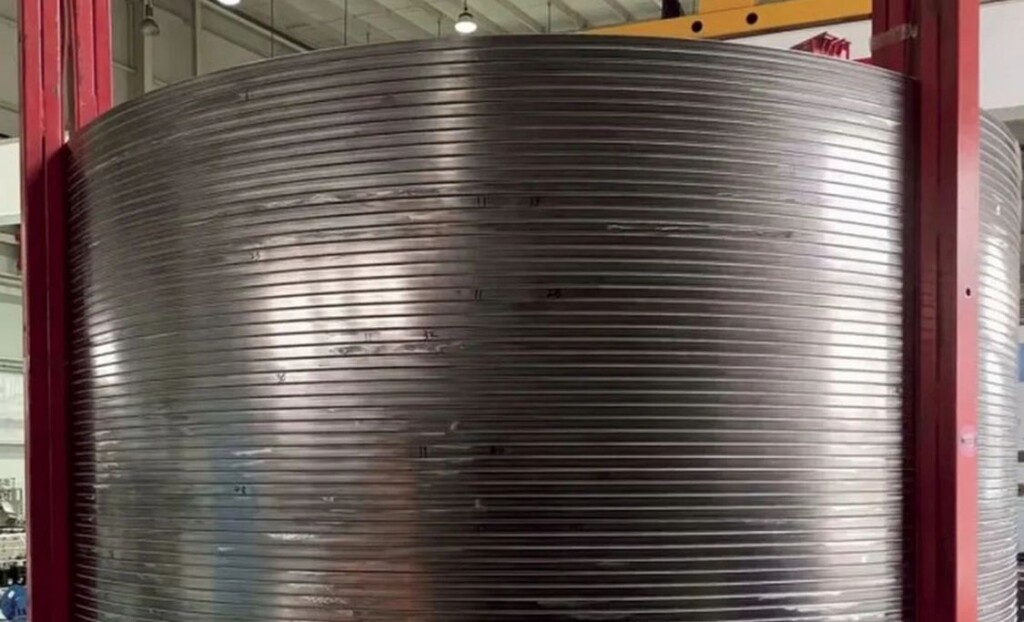Chinese Scientists Produce ‘Impossible’ Steel To Line Nuclear Fusion Reactors In Major Breakthrough

China has forged a type of steel that can withstand the extremely low temperatures and magnetic fields needed to sustain nuclear fusion reactions.
Creating such a material with steel is a feat previously thought impossible by experts working on the famous ITER project in France, of which the leader of this new steel project was a part.
The International Thermonuclear Experimental Reactor (ITER) project brought together experts from 35 nations to build the world’s largest nuclear fusion reactor in southern France.
Nuclear fusion is considered the ideal future energy source. It works by creating a thermonuclear reaction, the same process that powers our Sun, and containing it via superconducting magnets for brief periods of time to generate zero-emission energy in vast quantities.
It’s one of a handful of truly era-defining technologies humans are working towards, and physicists have faced numerous challenges in developing it. At the heart of a fusion reactor are superconducting magnets coated in a jacket of cryogenic steel. The steel must be capable of protecting the magnets from -516°F temperatures, but also of withstanding the incredible forces generated by them.
Li Laifeng, at the Chinese Academy of Sciences’ (CAS) Technical Institute of Physics and Chemistry in Beijing, observed how this steel could withstand the pressures of ITER, but future, more powerful—also more compact reactors—would need more advanced steel.
This took Li on a 12-year journey to create what ITER experts thought was impossible.
Reporting on those early days to a Chinese science outlet, Science Daily, Li said that Western experts in the field thought that ‘316LN austenitic stainless steel,’ a specialized alloy designed for extreme conditions and used in ITER and capable of withstanding 11.8 Tesla magnetic fields, would be sufficient for future fusion projects.
Li doubted that, and allied with top scientists in the field of cryogenics and materials sciences, believed it was worth pursuing a better alloy.
In 2021, the CAS Institute of Plasma Physics in Hefei province set the benchmark for what the country’s own national fusion program would require to be successful—benchmarks that 316LNa steel could not meet.
Eventually, Li Laifeng was in charge of the High-Strength Steel Research Alliance, comprising 4 scientific institutes and 13 enterprises. According to South China Morning Post, “China high-strength low-temperature steel No. 1 (CHSN01) successfully met the institute’s benchmarks, showing the capability of resisting 20 Tesla fields, 1,300 megapascals of stress, and the low temperatures which protect the device from the heat generated by nuclear fusion.
OTHER IMPRESSIVE PROJECTS: World’s First Diamond Battery Could Power Spacecraft and Pacemakers for Thousands of Years
500 tons of this steel is now in production for China’s Burning Plasma Experimental Superconducting Tokamak, slated for completion in 2027 to replace its older fusion system.
Nuclear fusion has come on leaps and bounds over the last 5 years, with multiple milestones being set in several different countries. There’s more than one way to generate power through nuclear fusion, and the distributed work going on in Japan, China, Australia, the EU, and multiple locations in the US is leading to distributed advancements not only in the materials reactors are built with, but also in the efficiency of power generation, which until recently was always less than the energy required to operate a reactor.
MORE CHINA NEWS: Mercury Emissions Fall 70% Over the Last Four Decades Thanks to UN Treaty, Coal Phase-Out
Unlike nuclear fission—the splitting of atoms—fusion produces no radioactive waste. The tens of millions of degrees of heat present inside the fusion chamber require immense physical forces to generate and contain them. Any malfunction that results in the interruption of those forces has the result more akin to the blowing out of a candle rather than the detonation of an H-bomb.
Time will tell whether CHSN01 is successful in shielding fusion into real-world efficacy.






Please be good and do not spam. Thank you.